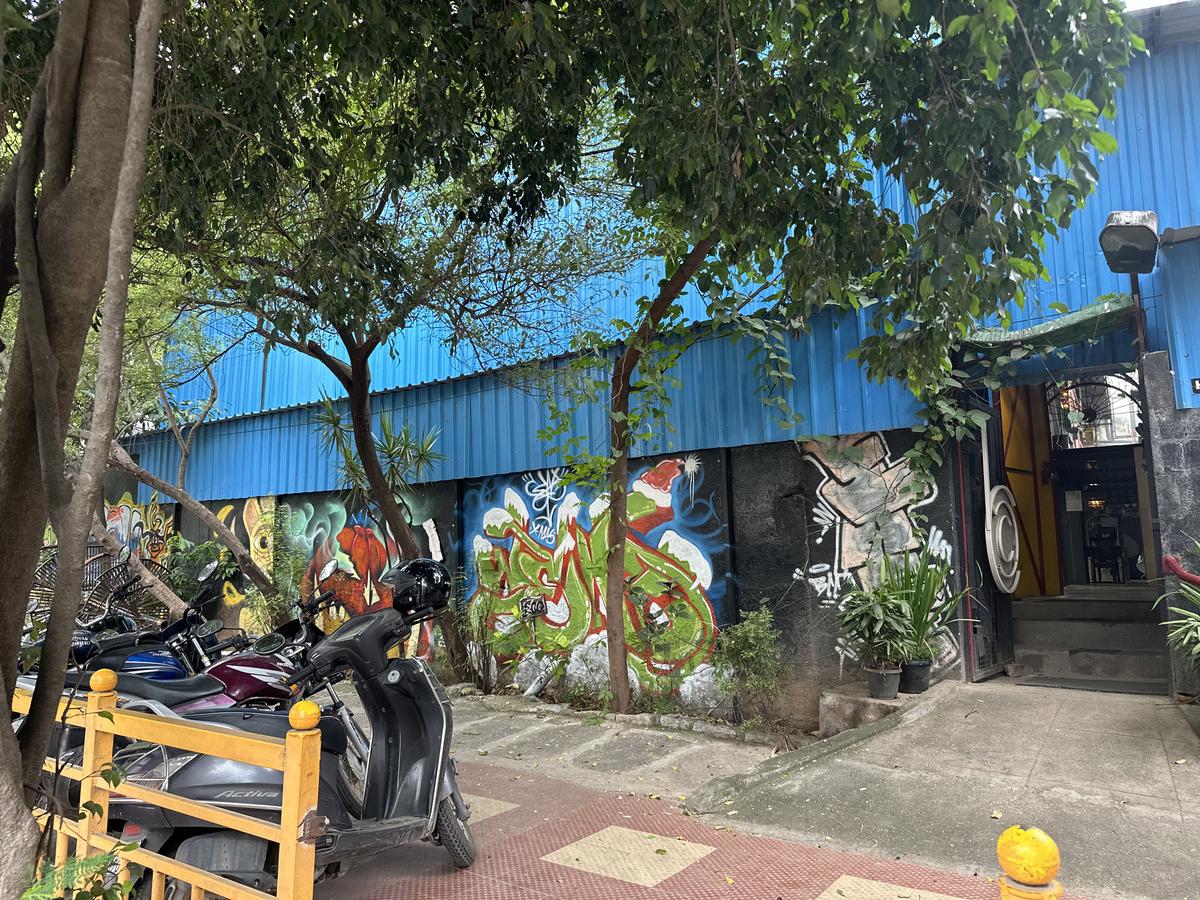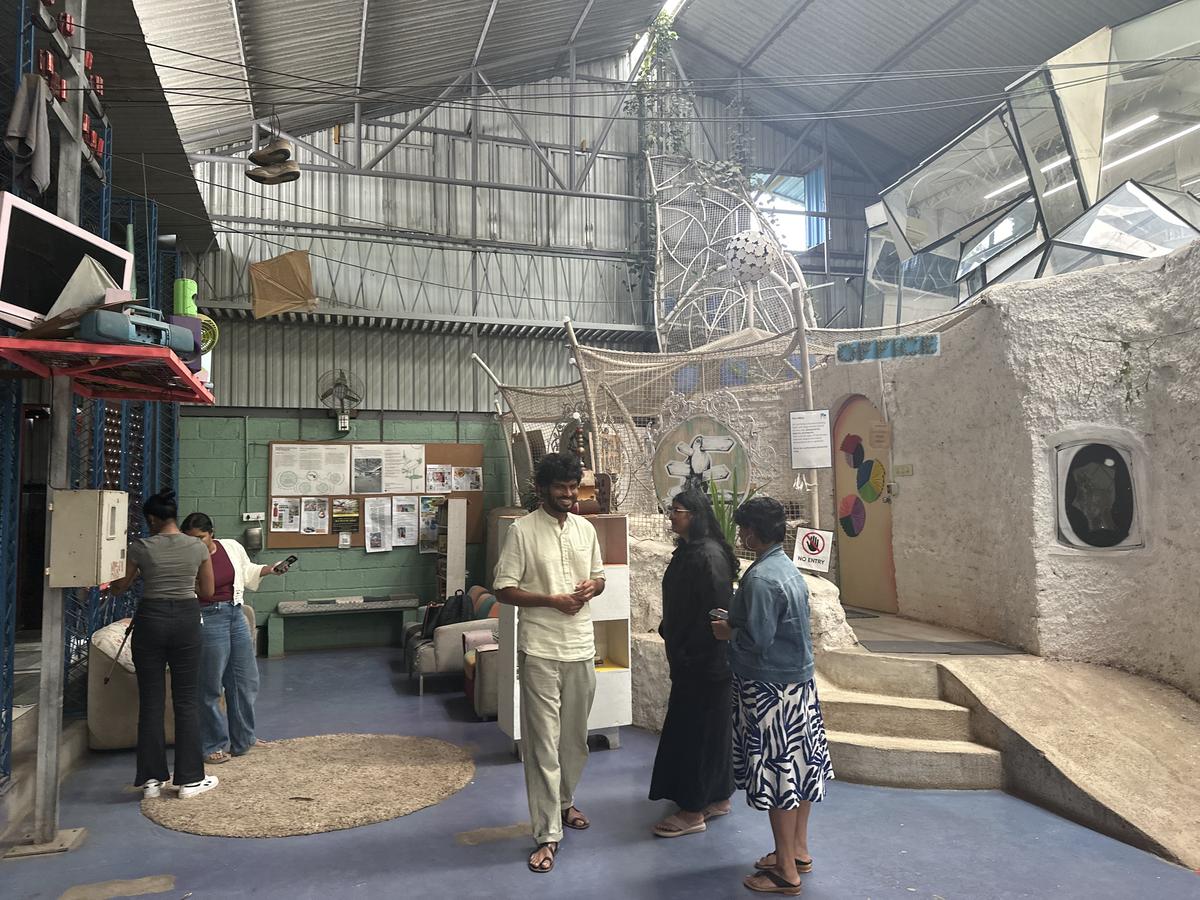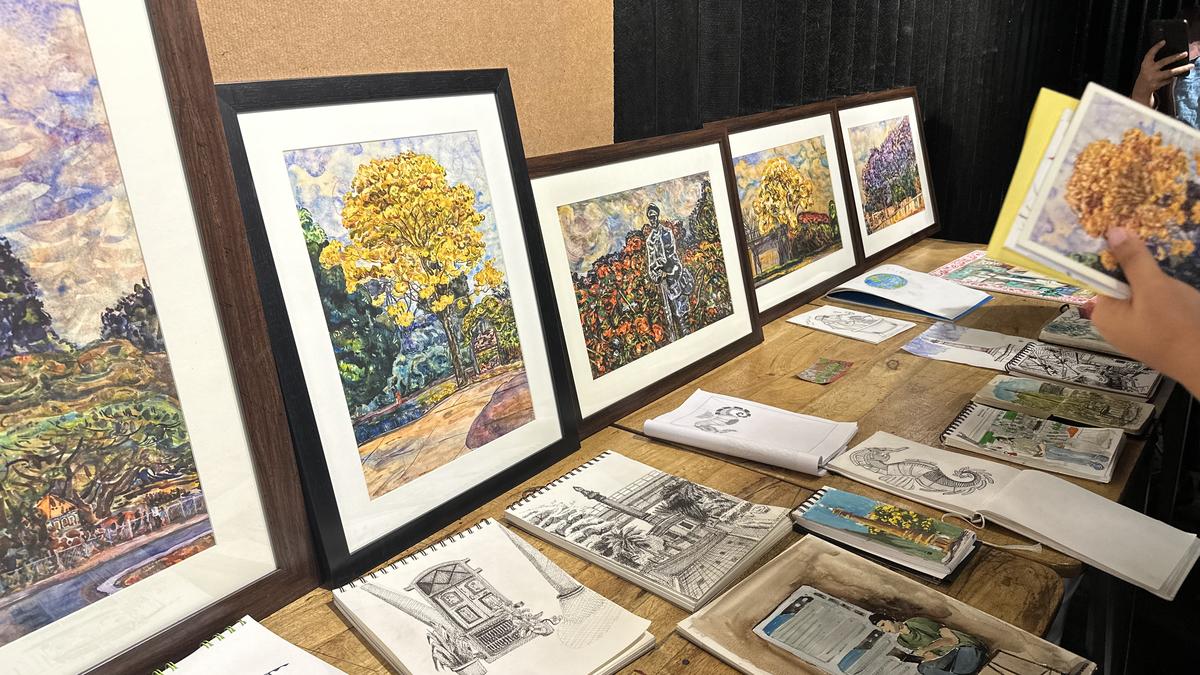Project 560 | Photo Credit: Special Arrangement
Bengaluru’s vibrant culture and history is being brought to the fore through Project 560, which aims to engage the city’s residents and transform the city into a dynamic canvas for artistic expression.
“We want locals to connect with each other and ensure that Bengaluru remains the protagonist,” says Harshita Bathwal, programme officer, Project 560. The project, under the aegis of India Foundation for the Arts (IFA), is the first of its kind dedicated to celebrating and preserving Bengaluru’s rich heritage. The name was inspired by Bengaluru’s postal code, with Project 560 spreading across the city, promoting long-term commitments to its cultural vibrancy.
The initiative involves various aspects ranging from neighbourhood activities to curated artistic activities. One such notable aspect within the project was spearheaded by art conservator Roshni M, whose work was recently showcased at the Bangalore Creative Circus. Over the past six months, Roshni delved deep into the history, art and heritage of Rajajinagar, one of Bengaluru’s oldest industrial hubs, and captured its essence through an art exhibition and documentary. She also organised a series of ‘sketch meets’ during her research period, where she collaborated with local artists to sketch the locality on canvas.

Project 560 | Photo Credit: Special Arrangement
Being a native of Rajajinagar, Roshni carefully collected archival information and conducted interviews about important landmarks, including the Navrang Theatre, Sagar Restaurant and the Rajajinagar Foundation Pillar – symbols of the area’s heritage.
Reflecting on her work, Roshni said, “This area is quite different from the one that was inaugurated by Jayachamaraja Wadiyar on July 3, 1949. Over eight residential complexes have come up here in the past five years alone.”
Due to rapid development, only the historic Ram Kumar Mills stands as a testimony to Rajajinagar’s heritage. Roshni notes the changing scenario and expresses concern about further commercial encroachment. “Chances are that the surrounding areas are going to suffer the same fate. Rajajinagar is close to the city centre, so it is prime property for commercial and residential complexes,” she explains.
However, Rajajinagar still retains its charm and cultural significance, remaining a bustling community hub where residents frequent popular places and old haunts for their daily needs. The cultural migration of Rajajinagar is clearly visible in the temples here, including the famous ISKCON temple and other cultural establishments like the Rumale Art House.

Project 560 | Photo Credit: Special Arrangement
Roshni says the biggest challenge she faced was the lack of archival material and maps for Rajajinagar, as the available data covered mostly small areas.
Project 560 is set to expand its reach in Bengaluru, inviting more projects like Roshni to participate. The opportunity is not limited to those working in the field of arts. Mridupankhi Rajkumari, programme officer, Project 560, said, “We believe in ensuring education along with arts. In fact, any interested person who wants to highlight their field within the city can always reach out to us.”
Applications for Project 560 are open till August 2, 2024. Log on to indiaifa.org for more details.
